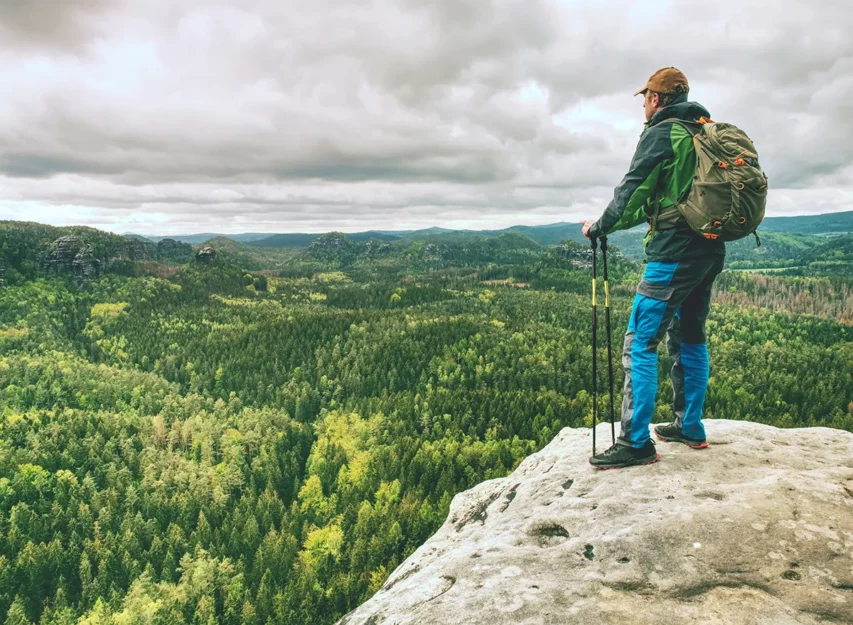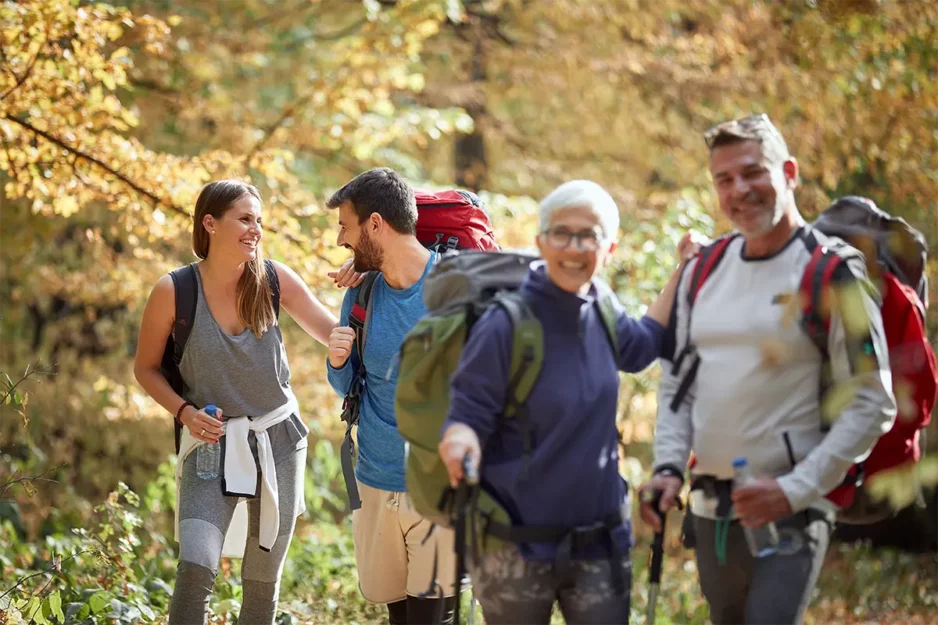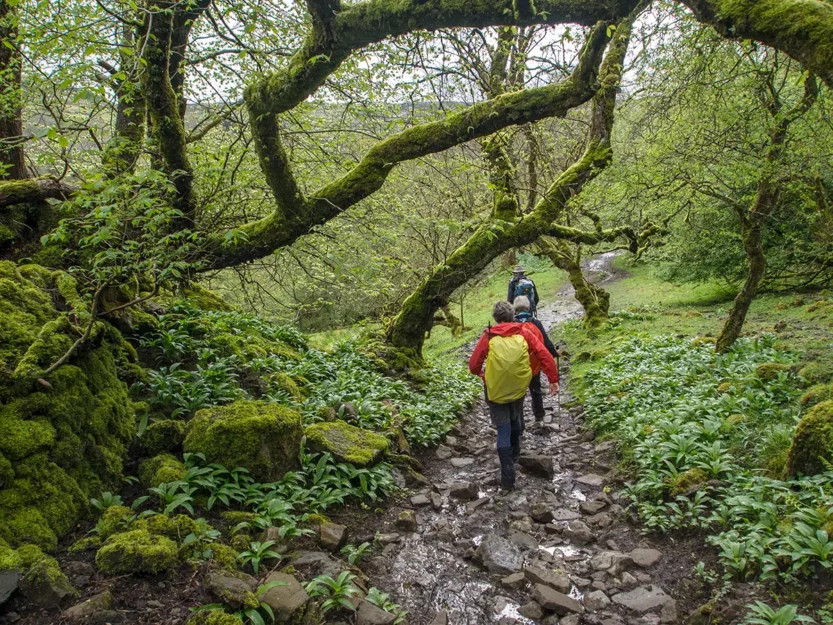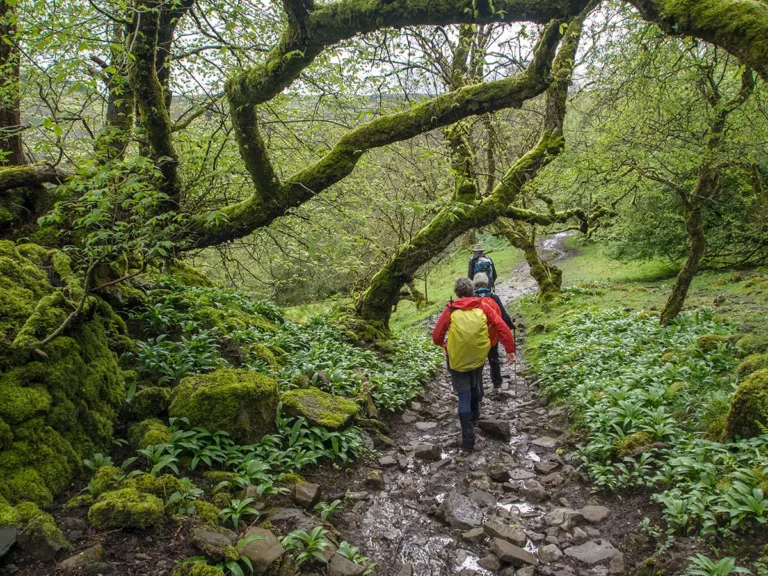Substantial elevation changes, the ruggedness of a trail, and the breathtaking view at the end significantly impact your average hiking speed. And that’s before considering physical fitness levels.
Along a moderate trail, a good hiking pace is 2 miles per hour. That compares to the average walking pace on a flat surface of 2.5 to 4 miles per hour.
Since many new hikers underestimate the effects of uneven ground and steep hikes, this article explains how your average hiking speed is impacted so you can accurately budget for your next hike.
Why is knowing your average hiking speed important?
Hiking has dangerous variables that most activities don’t — including a lack of cell phone service. Having felt the wrath of a worried pregnant wife when a friend and I took a “shortcut” that accidentally turned a 3-hour hike into 6, misjudging timing without a way to notify your loved ones makes for a scary situation.
Knowing your hiking pace is essential for:
- Finishing before the sun sets
- Timing morning hikes before the extreme heat
- Notifying family or friends of when you’ll finish
- Planning a pickup time for a through-hike
- Packing enough water and snacks

Breaking down the average hiking speed
I ran a Spartan Race near the Nevada and Arizona state line a few years back. This was my third Spartan with two Tough Mudders under my belt. I couldn’t tell you how the other 4 races began, but I’ll never forget the steep hill at the start of this course that zapped me before I could even warm up.
Steep elevation gains are strenuous and will significantly slow your pace.
Marathon running coach John Kellogg states as a rule of thumb for street running that for every 10 feet of elevation change, your pace slows by 1.74 seconds, roughly 3% for a six-minute mile. And that doesn’t take into consideration a rocky trail with loose terrain.
Most easy hikes feature at least one hundred feet in elevation change and often a few hundred more. So when adding unsure footing and rocky obstacles, a 2 mile per hour average hiking speed will quickly slow to 3 or 4 miles.
Uneven terrain increases stress on the lower body
Many long-distance runners find their pace and can maintain it well across an impressive distance. As someone who unsuccessfully tried their hand at marathon running, I won’t discount how challenging it is, but uneven surfaces play a substantial role in lower body strain.
According to a study by the Journal of Experimental Biology, the thigh muscles work 60 to 80 percent harder when walking on an uneven surface. Furthermore, navigating rough terrain forces the hips to use 75 percent more power in each step. And this experiment was performed on a treadmill with foam obstacles, not on a hiking trial’s loose, rugged, and unpredictable terrain.
Hiking is incredibly strenuous for the lower body, making maintaining a pace incrementally more challenging with each mile hiked.
The best ways to track your average hiking speed
You can read as many tips and estimates online about average hiking speed, but the true answer, and best estimates going forward, will be from your own measurements.



Using an app or wearable
Tracking adventures has never been more accessible. At a minimum, the two most popular phones, Apple and Android, offer Apple Health and Google Fit. These baseline trackers do an okay job but aren’t as comprehensive as others.
I track my hikes using Strava, a popular runner and cyclist app that’s excellent for hiking. Strava maps your hike with GPS, even with no cell phone service, while tracking and providing elevation gain and timing.
I hiked 11.28 miles on the out-and-back Griffith Peak trail ascending an elevation gain of 3,417 ft in 4 hours and 8 minutes. This breaks down to an average pace of 2.7 miles per hour.
Map My Run by Under Armour and Garmin Connect are also great app alternatives.
Calculating manually
You also don’t need a fancy app to track you. It’s rare to find a trail unknown by Alltrails, a website that maintains a massive database of every popular trail worldwide.
By researching each trail in advance and timing your start and end time, you can quickly identify your pace while tracking how much of an impact a change in elevation makes to your average hiking speed.
Alltrails also provides an estimated completion time, but they shouldn’t be relied upon until you know your pace. In the example of my Griffith Peak hike, I beat the estimate by two and a half hours and added an extra mile by parking in the wrong lot.
Why the rush? Hikes are for enjoying nature
I’m instantly bored when running or walking around my neighborhood. One mile around the block feels like an eternity compared to time on a trail.
The beautiful scenery along a hike helps you extend your workout to distances you wouldn’t consider around your home or at a park. But hiking is also much more than just an excellent cardio and lower body workout.
A study by the American Psychological Association has shown nature to positively impact your mind and mental health, including decreasing:
- Depression
- Stress
- Anxiety
While improving:
- Memory
- Cognitive flexibility
- Attentional control
- Well-being
With so many benefits of spending time in nature, a hike shouldn’t be left with a time limit or rushed to completion. Take frequent breaks, enjoy a snack or lunch at the trail’s end, and appreciate what nature has to offer.
Tips to increase your hiking pace
My Achilles heel is high elevation. Spending all of my life in lower elevations, the moment I surpass 8,000 feet, every step becomes incrementally more challenging.
Whether it’s steep climbs or hiking switchbacks, it’s essential to identify your trail weaknesses to increase your average hiking speed.
Since elevation gain is the most common challenge, hill runs and stair climbs are excellent for conditioning and training. Although basic cardio, like running, jogging, and biking, along with core and leg strength training, is a perfect start.
The absolute best way to become a faster and better hiker is to hike more.
Final thoughts
If there’s one common theme to this advice, it’s that elevation gain changes everything. You can hike an easy 5-mile trail in less time than a moderate 3-mile trail when adding a few hundred feet of steep elevation gain.
For a hiking beginner, it’s best to budget one and a half miles per hour with the expectation of finishing early. Experienced hikers focused on the workout, not the scenery, can use 2.5 to 3 mph as a baseline.
It only takes one hike to determine your hiking pace baseline and a few further hikes to validate.
So, pick out a few trails near you with varying degrees of difficulty and take a hike. Start with a couple easy hikes, add moderate elevation gains, and continually track your data.
You’ll quickly learn your pace and your most meaningful challenges to overcome.
What do you estimate your average hiking speed to be? Share this article, and your results, to help others who are starting their hiking journey.








